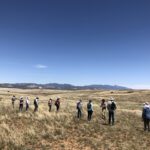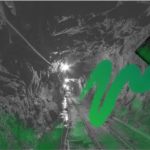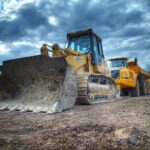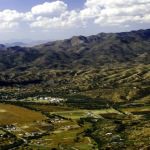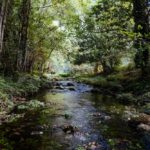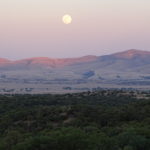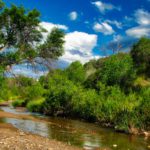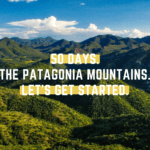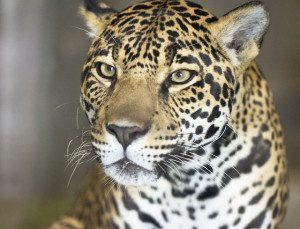
Jan 13, 2015 | Blog
FOR IMMEDIATE RELEASE
Plug Pulled on Proposed “Sunnyside” project in Arizona’s Coronado National Forest
Tucson, Ariz. — Today the U.S. Forest Service temporarily put the brakes on an environmentally hazardous mining project in southern Arizona’s Coronado National Forest that it previously approved in August. The Forest Service’s decision follows a similar move by the U.S. Fish and Wildlife Service, which had originally given the project the green light in August and then withdrew its approval in December. The agency decisions to withdraw their approvals of the Canadian mining company Regal Resources’ “Sunnyside Project” are based on the project’s potential violation of multiple environmental laws.

photo by Nathan Rupert
“The agencies knew from the beginning that this project could have a devastating impact on the local wildlife and habitat in this unique corner of the country,” said Rob Peters of Defenders of Wildlife. “The Coronado is home to an incredible diversity of imperiled species like the jaguar, ocelot and yellow-billed cuckoo, all which are already at risk from multiple projects in the region.”
“No one understood why they approved this project to begin with, but for the sake of Patagonia’s residents and wildlife, we are glad to see that they’ve reconsidered,” added Peters.
In October conservation groups Defenders of Wildlife and the Patagonia Area Resource Alliance filed a lawsuit claiming the federal agencies’ approvals the Sunnyside project violated environmental laws and posed a threat to endangered species and the safety of drinking water for local residents.
“Sunnyside could have been a disaster not only for our region’s unique wildlife, but also for the residents living directly downstream and the municipal watershed of the town of Patagonia,” said Wendy Russell of the Patagonia Area Resource Alliance. “Projects like Sunnyside use and abuse a tremendous amount of the local water supply and create long-term destruction of wildlife habitat. The people and wildlife of our national forests deserve more, and the agencies know that.”
Click to hear from environmental attorneys on why they sue.
###
Contact: Courtney Sexton, csexton@defenders.org, 202-772-0253
Wendy Russell, wendy@patagoniaalliance.org, 520-477-2308
Defenders of Wildlife is dedicated to the protection of all native animals and plants in their natural communities. With more than 1.1 million members and activists, Defenders of Wildlife is a leading advocate for innovative solutions to safeguard our wildlife heritage for generations to come. For more information, visit www.defenders.org and follow us on Twitter @DefendersNews.
The Patagonia Area Resource Alliance is a citizen watchdog organization that monitors the activities of mining companies, as well as ensures government agencies’ due diligence, to make sure their actions have long-term, sustainable benefits to our public lands, our water, and the town of Patagonia. For more information visit www.patagoniaalliance.org and follow us on Twitter @PARAalliance.

Nov 26, 2014 | Blog
It’s hard to believe that the end of the year is nearly upon us! When 2014 began, your friends, neighbors and colleagues here at the Patagonia Area Resource Alliance (PARA) were gearing up for a busy year promoting the incredible beauty, community, and natural heritage of the Town of Patagonia and the Patagonia Mountains. Little did we know what a whirlwind year it would be! The past eleven months have seemingly sped by while we have been advocating to protect this amazing place that we all treasure from the multiple threats that exploratory drilling and mining pose to our small community.
PARA was formed in 2011 to educate and engage the community about the risks and realities of mining, to promote local sustainable economies, to better understand our precious and imperiled natural resources such as clean water and wildlife, and to actively advocate for the protection of those resources in concert with Patagonia’s distinct and serene rural way of life.
You have helped us along the way this year! You have volunteered, come to public meetings, wrote letters, monitored wildlife, and participated in the NEPA process. Together, we have contributed over 2500 volunteer hours already in 2014!
It has been another amazing and transforming year for PARA, but we have so much more to do! PARA runs on a shoestring budget with the human power of an almost entirely volunteer workforce and our two person outreach team–budgeted for only 30 hours per week. We’d like to do so much more! Please consider making a donation to PARA this year to support and grow this critical work in our community.
A few of the activities and accomplishments reached this year through the contributions of all of PARA’s supporters, volunteers and partners:

Ocelot, Leopardus pardalis. photo US FWS
Holding Agencies Accountable
Filed a complaint in federal court in October with Defenders of Wildlife against the Forest Service and the Fish and Wildlife Service for their unlawful approval of the Regal Resources Sunnyside mineral drilling project in southern Arizona’s Coronado National Forest, in the Alum Gulch area of the Patagonia Mountains. The Sunnyside project approval violates environmental laws and poses a potential threat to endangered species and the safety of drinking water for Patagonia area residents. The Coronado National Forest, Patagonia Mountains and waterways in our region support some of the world’s most imperiled wildlife, including jaguar, ocelot, lesser long-nosed bat, Mexican spotted owl, and yellow-billed cuckoo.
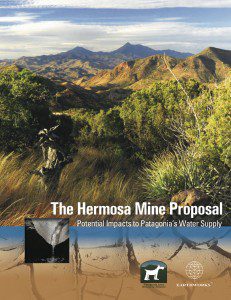 Educating the Community on Mining Risks
Educating the Community on Mining Risks
Released a peer-reviewed report with the national organization EARTHWORKS, “The Hermosa Mine: Potential Impacts to Patagonia’s Water Supply.” The report uses geologic and hydrologic studies from mine developer AZ Mining Inc (Wildcat Silver), the United States Geologic Survey, the Arizona Department of Water Resources, the Town of Patagonia, and others, as well as analyzes historic contamination issues caused by mining in the Patagonia Mountains. We conclude in our report that the seemingly inescapable realities of acid drainage and water consumption impacts pose too great a risk to Patagonia.
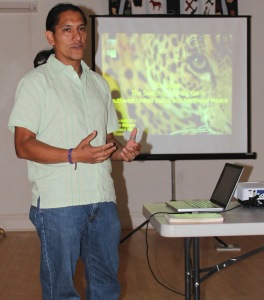
SIA Biologist, Sergio Avila
Empowering the Community, Ensuring Due Diligence
Coordinated and submitted NEPA comments on the USFS draft Environmental Assessment for the AZ Mining Inc (Wildcat Silver) Hermosa drilling project with Defenders of Wildlife, Arizona Mining Reform Coalition, Center for Biological Diversity, Earthworks, and Sky Island Alliance. Hosted a community workshop to empower residents to comment on the Hermosa EA comprising of an overview of the Hermosa proposal and its likely impacts; a NEPA presentation and how to comment on an EA by Jenny Neeley, Attorney at Law; and a presentation of area wildlife by Biologist, Sergio Avila, of Sky Island Alliance.
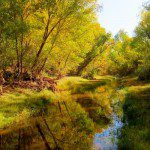
Sonoita Creek
Tireless Advocacy for Patagonia Area Water and Wildlife
Submitted comments regarding the proposed United States Forest Service Guidelines on Groundwater, advocating for groundwater protection and consideration of potential impacts regarding all agency activities in our National Forests, especially in regards to hardrock mining. Submitted comments to the Environmental Protection Agency regarding the proposed rule defining the “Waters of the U.S.” advocating for protection of ephemeral and intermittent streams. Submitted comments advocating for more designated critical habitat in the Patagonia Mountains for the threatened yellow-billed cuckoo.
To learn more about our 2014 accomplishments and efforts, please take a look at PARA’s “Report to the Community” available on our website at: www.patagoniaalliance.org/our-activities- outreach/
Looking Ahead…
Unceasing Protection of the Patagonia Mountains.
With continued legal assistance from Defenders of Wildlife, PARA strives to hold mining companies, the US Forest Service and all agencies accountable to follow the laws and regulations designed to protect our water, air, surrounding ecosystems and communities. We are positioned to respond to future exploratory mining proposals scheduled for the Patagonia Mountains.
Sustaining Wildlife Data Documentation and Collaborations
Citizen scientists from the community continue wildlife monitoring efforts in the Patagonia Mountains focusing on areas immediately at risk by proposed mining activities. Data gathered is used to fight mining proposals through species lists, presence of vulnerable species and habitat analysis. Additional collaborations are ongoing with Defenders of Wildlife, EARTHWORKS, Sky Island Alliance and Tucson Audubon to ensure this data is applied to advocacy efforts in the most effective ways.
Increasing Our Outreach for 2015
PARA is strategizing to expand community education activities to grow our base of support and empower concerned residents with potential actions to keep mining out of the Patagonia Mountains. We recognize the need to establish sustainable funding to maintain core functions and seek to expand funding sources. With our additional staff funding in the 2015 budget, we plan to sustain our two person team to continue to expand our outreach beyond our community boundaries. Our 2014 Financial Report is also available online: www.patagoniaalliance.org/our-activities-outreach/
For A Thriving Community in 2015 and beyond
PARA recognizes that the health and economic prosperity of our community are deeply connected to the well-being of the Patagonia Mountains and the Harshaw/Sonoita Creek watershed. They are the source of our drinking water, clean air and the centerpieces that drive our local economy.
Please make a Year-End Gift to PARA
There are many needs in our community and many compelling requests for support. We believe one of the most fundamental is protecting our drinking water and our community from the well-known detrimental effects of open pit mining. To that end, PARA is seeking to raise $19,000 by the end of 2014 to support the several ongoing and new initiatives outlined above as we move into 2015. We are fortunate to have a group of amazingly committed community members and generous donors supporting our work, but we are looking to broaden the base of support to ensure not only financial sustainability, but also the ability to impact local, regional and national decision-making on our own behalf.
That’s where you come in. The work necessary to make this vision of 2015 a reality is possible only because of your time and your financial support. Please make a gift today.
Recurring monthly donations can be made securely through PayPal.
Every single contribution makes a sizable difference to our organization and ultimately for our community. It is only because of the generous support from people like you that we can undertake this critical work. Thank you!
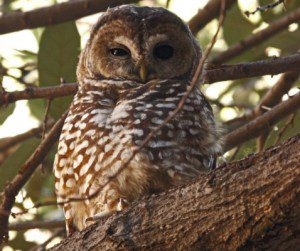
Oct 29, 2014 | Blog
FOR IMMEDIATE RELEASE
October 29, 2014
Contact: Courtney Sexton, csexton@defenders.org, 202-772-0253
Wendy Russell, wendy@patagoniaalliance.org, 520-477-2308
Groups file complaint against Forest Service and Fish and Wildlife Service for approval of mineral drilling project in Arizona’s Coronado National Forest
TUCSON, ARIZ. – Defenders of Wildlife and the Patagonia Area Resource Alliance today asked a federal court to hold the United States Forest Service and United States Fish and Wildlife Service accountable for their unlawful approval of the “Sunnyside” mineral exploration drilling project in southern Arizona’s Coronado National Forest, in the Alum Gulch area of the Patagonia Mountains. The groups say the approval of the Canadian mining company Regal Resources’ Sunnyside Project violates environmental laws and poses a potential threat to endangered species and the safety of drinking water for local residents. The Sunnyside Project involves drilling multiple exploratory holes up to 6,500 feet deep in one of the most biologically diverse mountain ranges in Arizona. The extensive drilling and construction would run 24/7 for months on end, and the total project operations could last up to 3 years.

Mexican spotted owl, ©Gooch Goodwin
The Coronado National Forest, the Patagonia Mountains and the watersheds in this region support some of the world’s most imperiled wildlife, including the jaguar, ocelot, lesser long-nosed bat, Mexican spotted owl, and yellow-billed cuckoo. Of particular concern is the Mexican spotted owl “Protected Activity Center” (PAC) in the Alum Gulch area, a site which is supposed to have the greatest protection of the law. One of the project’s proposed drilling sites is only one-tenth of a mile from the “nesting core area” of this PAC.
“The potential damage from the Sunnyside Project, especially coupled with other damaging mining projects in the region, could have devastating impacts on this imperiled wildlife and the habitat they depend on, as well as the water supply for local residents,” said Rob Peters of Defenders of Wildlife. “This is a national forest and imperiled wildlife and their habitats on the forest should be protected— not polluted by expanded drilling operations.”

Ocelot, Leopardus pardalis. photo US FWS
Patagonia area residents are dependent on water originating from Alum Gulch, an area which is also designated as critical habitat for the jaguar and Mexican spotted owl. The imperiled ocelot, lesser long-nosed bat, and yellow-billed cuckoo have also been observed near the project area.
“The Sunnyside Project could have tremendous adverse impacts on local wildlife and local residents, affecting the floodplains and the municipal watershed of the town of Patagonia,” said Wendy Russell of the Patagonia Area Resource Alliance. “The drilling will require 12,500 gallons of water per day, an amount approximately equal to ten percent of the daily water usage of the Town of Patagonia. This project threatens not only endangered wildlife, but our community’s water, health and safety.”
Click to hear from environmental attorneys on why they sue.
###
Defenders of Wildlife is dedicated to the protection of all native animals and plants in their natural communities. With more than 1.1 million members and activists, Defenders of Wildlife is a leading advocate for innovative solutions to safeguard our wildlife heritage for generations to come. For more information, visit www.defenders.org and follow us on Twitter @DefendersNews.
The Patagonia Area Resource Alliance is a citizen watchdog organization that monitors the activities of mining companies, as well as ensures government agencies’ due diligence, to make sure their actions have long-term, sustainable benefits to our public lands, our water, and the town of Patagonia. For more information visit www.patagoniaalliance.org and follow us on Twitter @PARAalliance.
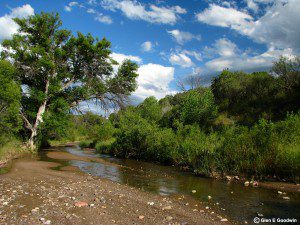
Oct 28, 2014 | Blog
Peer-reviewed report outlines Hermosa mine’s risks of water consumption, perpetual water pollution to Patagonia area
Patagonia Area Resource Alliance
Earthworks
October 28, 2014
 Patagonia – The Hermosa silver mine proposed inside Patagonia, Arizona’s Municipal Supply Watershed could deplete the town’s drinking water and perpetually contaminate area groundwater with acid mine drainage, according to a new peer-reviewed report.
Patagonia – The Hermosa silver mine proposed inside Patagonia, Arizona’s Municipal Supply Watershed could deplete the town’s drinking water and perpetually contaminate area groundwater with acid mine drainage, according to a new peer-reviewed report.
Reviewed* by a USGS scientist and released by the Patagonia Area Resource Alliance and Earthworks, the study also concludes that drinking water wells of surrounding residents are also threatened.
“A mine that threatens our town’s drinking water is a mine that shouldn’t be built,” said Wendy Russell of the Patagonia Area Resource Alliance. She continued, “In Arizona, water is more precious than silver, and especially so after more than a decade of drought.”
Proposed by Canadian exploration company AZ Mining Inc (Wildcat Silver) – a company with no experience operating a mine – Hermosa is proposed at a time when Patagonia is already concerned with dropping groundwater levels and increasing concern about future water supplies.
The 4,000 foot wide and 1,500 foot deep Hermosa silver and manganese mine would consume 670 million to 1.2 billion  gallons of groundwater per year – up to 53 times the amount of water the town uses today — to run the mine within the upper reaches of Harshaw Creek, a portion of Patagonia’s Municipal Supply Watershed. This water consumption will lower the recharge rates for the aquifer on which the town depends, and is also likely to produce acidic runoff, requiring ongoing treatment in perpetuity.
gallons of groundwater per year – up to 53 times the amount of water the town uses today — to run the mine within the upper reaches of Harshaw Creek, a portion of Patagonia’s Municipal Supply Watershed. This water consumption will lower the recharge rates for the aquifer on which the town depends, and is also likely to produce acidic runoff, requiring ongoing treatment in perpetuity.
“If the U.S. Forest Service were to permit the Hermosa mine, this report shows it would jeopardize our community’s drinking water. And for what? For foreign shareholders’ silver,” said Wendy Russell. She continued, “This is a mine proposal that just doesn’t make sense for our community who would actually have to live with it.”
The mine is proposed within the Coronado National Forest, and therefore subject to the 1872 Mining Law. Federal land managers interpret the 1872 Mining Law to require them to permit mines, no matter if the land is better used for other purposes – like protecting a town’s drinking water supply watershed.
“Because the Hermosa mine proposal threatens area water supplies, it obviously should not be permitted,” said report author Pete Dronkers of Earthworks. He continued, “That it’s being considered at all is a strong argument for reforming the 1872 Mining Law to allow the consideration of other potential land uses.”
The report also evaluates the nature of groundwater depletion that is likely under the proposed mine plan, characterizes the impacts of such, and also analyses other known adverse impacts, such as air pollution, endangered species, and other cumulative impacts.
The report, including an executive summary, can be found at: patagoniaalliance.org/report-hermosa-mine
For more information:
Fact Sheet
Full Report
Contact:
Pete Dronkers, Earthworks
(775) 815-9936, pdronkers@earthworksaction.org
Wendy Russell, Patagonia Area Resource Alliance
(520) 477-2308, wendy@patagoniaalliance.org
* An earlier version of this press release indicated that a USGS scientist “endorsed” this report. We were informed by the United States Geological Survey that the agency only endorses their own reports and documents.
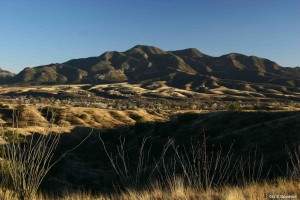
May 1, 2014 | Blog
By Carolyn Shafer
It is critical that we as individuals, our governing bodies and our community organizations mindfully support existing businesses and invite new business activity that will create a stable and sustainable economy and provide livelihood to all who are willing to work. Let’s first consider some historical and economic information.
The longest lasting local economic activity in the Patagonia area during the last four centuries has been ranching, a part of the economy even now. As prospecting in the 19th and 20th centuries found major mineral deposits, there has also been two boom-and-bust periods of mining, from about 1860-1910 and again in the middle 20th century. The last mine near Patagonia closed in 1965.
 In the 50 years since the last mining bust, the community has rebuilt its local economy based on ranching, tourism, local food production and recreational amenities (birding, hunting, camping, cycling, hiking, etc).
In the 50 years since the last mining bust, the community has rebuilt its local economy based on ranching, tourism, local food production and recreational amenities (birding, hunting, camping, cycling, hiking, etc).
How did the local economy perform under the industrial based economy (predominantly mining) and under the service based economy (predominantly tourism)? A review of all available Town of Patagonia financial audits (1963-2013) helps quantify a half century of economic transformation for the Town of Patagonia. Sales tax revenue is one measurement of the town’s financial health. In 1963, the Town’s sales tax revenues in comparable 2013 dollar value was $54,311 (actual revenue was $7,191). In 2013, the Town’s sales tax revenue was $197,540. The service based economy (predominantly tourism) in 2013 provided 364% more sales tax revenue than the predominantly mining industrial based economy. Another measure of the town’s health is population, the town’s population grew from 540 in 1960 to 913 in 2013 – a growth of 69% under the service based economy.
I am one of the owners of the local artists gallery. Our business represents more than 40 area artists. 85% of our business is from visitors to the Patagonia Mountains who come here to enjoy birding, hunting, camping, cycling, hiking and other outdoor recreational activities. I believe that my business and almost all of the existing businesses will be destroyed as the result of new mining in our mountains. The existing, local jobs that will be lost will exceed any mining jobs that might be created for local people. Yes, there is a history of mining in this area. I know that there are families in our community who were part of that mining tradition. Historic mining put food on the table and provided a living for many local families. Those historic mines and jobs are of an entirely different time and place than would exist with today’s mining practices.
What can we as a community do now to proactively create a stable local economy? I propose that we create a discussion group that includes all businesses as well as community organizations and interested individuals. A few of the topics include a look at the factual information available about the current employment situation, the history of this area’s economic stability and success under both the industrial and the service based economies, discussions about how we can support our existing businesses, and determine how we attract new businesses that will contribute to this thriving, resilient community. I hope to enlist local business owners and community organizations to participate in such a discussion so that we can work together as a community to establish a plan that truly perpetuates a strong and sustainable economy. I will first reach out to the Patagonia Area Business Association and the newly formed Patagonia Regional Business Coalition as two organizations that represent various business interests in the community.
Please share your suggestions for economic development and local employment. My contact information is in the Country Connection.
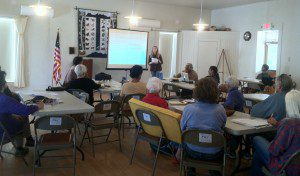
Mar 27, 2014 | Blog
PARA, Jenny Neeley and Sergio Avila from Sky Island Alliance teamed up again to host a NEPA comment workshop at Cady Hall in Patagonia on March 26, 2014. Discussed were the potential issues of the Forest Service’s Draft Environmental Assessment of the AZ Mining Inc / Wildcat Silver / Arizona Minerals Hermosa mining exploration proposal and how to comment effectively on it.
 Jenny Neeley reprised her role as our National Environmental Policy Act (NEPA) expert for tips on filing public comments on the Hermosa draft Environmental Assessment (EA) released by the Coronado National Forest. The purpose of an Environmental Assessment is to determine whether the impacts of a project will be significant. The goal for our comments on the draft EA is to demonstrate that the Hermosa project impacts will be significant so that the Forest Service conducts a more detailed and comprehensive Environmental Impact Statement. Read more tips for writing comments here.
Jenny Neeley reprised her role as our National Environmental Policy Act (NEPA) expert for tips on filing public comments on the Hermosa draft Environmental Assessment (EA) released by the Coronado National Forest. The purpose of an Environmental Assessment is to determine whether the impacts of a project will be significant. The goal for our comments on the draft EA is to demonstrate that the Hermosa project impacts will be significant so that the Forest Service conducts a more detailed and comprehensive Environmental Impact Statement. Read more tips for writing comments here.
PARA board member Cliff Hirsch gave a summary of the expected activities proposed by the AZ Mining Inc / Wildcat Silver / Arizona Minerals Hermosa exploratory drilling project located 6 miles southeast of the Town of Patagonia. The project activities encompasses 7350 acres of both Coronado National Forest and private land. It is also expected to use 3,525,800 gallons of groundwater pumped from within the Town of Patagonia Municipal Supply Watershed. Click here for talking points and Hermosa project summary.

SIA Biologist, Sergio Avila
SIA biologist Sergio Avila discussed the amazing biodiversity found in the Patagonia Mountains during the Bioblitz event conducted in April 2013. View the Bioblitz report here. The results from the Bioblitz and the ongoing wildlife tracking in the Patagonia Mountains demonstrate the importance of the Patagonias as a wildlife corridor and biological hotspot in the sky island mountain ranges of southern Arizona and northern Mexico. Click for a list of Federally Threatened, Endangered and Sensitive Species in the Patagonia Mountains of the Coronado National Forest in southern Arizona.
The Hermosa draft Environmental Assessment is available at the Patagonia Public Library and online at the Forest Service website on the Hermosa project page: http://www.fs.fed.us/nepa/nepa_project_exp.php?project=41158.
Thank you everyone for your participation. The Forest Service received 200 public scoping comments on the Hermosa Plan of Operation. Let’s send them 200 more on the draft EA! Deadline to submit comments is Friday, April 11, 2014.
Additional Resources:
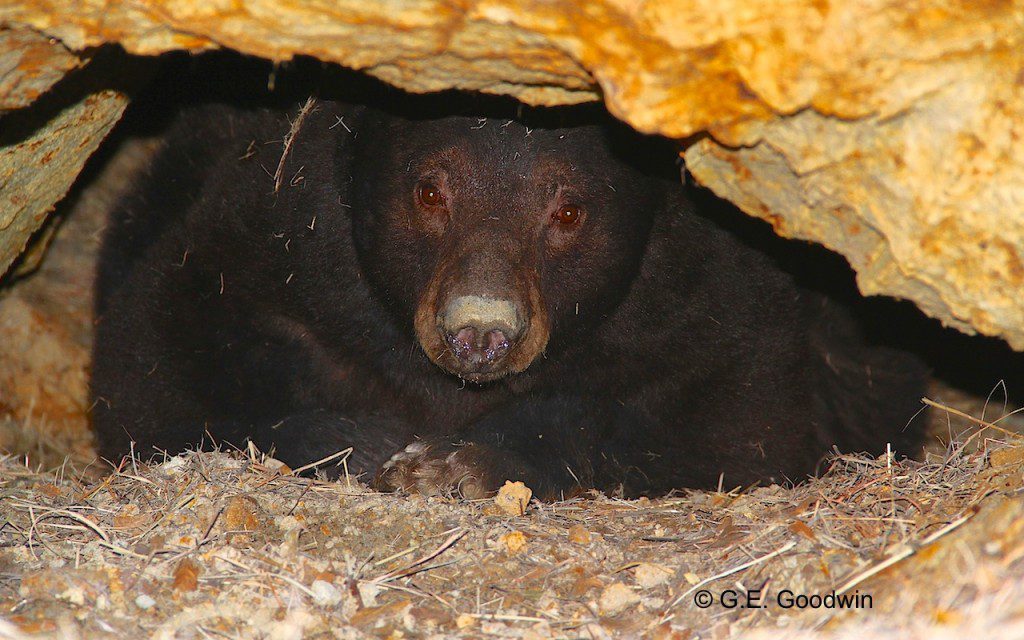
Save my home in the Patagonia Mountains. ©Gooch Goodwin
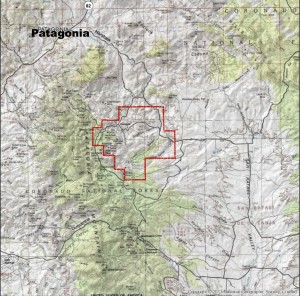
Mar 18, 2014 | Blog
The Coronado National Forest has released the draft Environmental Assessment (EA) for the AZ Mining Inc (aka Wildcat Silver, Arizona Minerals Inc) Hermosa exploratory mineral drilling project in the Patagonia Mountains.
Assist PARA in protecting our precious and imperiled natural resources such as clean water and wildlife, and actively advocate for the preservation of those resources by opposing AZ Mining Inc / Wildcat Silver’s draft EA drilling exploration plan.
- Plan to attend and ask questions at the public meeting hosted by the Coronado National Forest about AZ Mining Inc / Wildcat Silver’s draft Environmental Assessment at the Patagonia Union High School. Monday, March 24 from 6-8pm.
- Submit comments to the Forest Service about AZ Mining Inc / Wildcat Silver’s draft EA drilling plan. Want to know how? Attend PARA’s comment-writing workshop with Jenny Neeley and Sergio Avila on Wednesday, March 26, 4pm – 7pm Open House at Cady Hall.
- Sign a petition telling the Coronado National Forest that an EA is insufficient and a full Environmental Impact Statement is necessary when considering the Hermosa mineral drilling proposal. Sign Petition here.
- Advocate for the protection of our community’s drinking water, natural resources, and distinct, serene rural way-of-life by making a donation. Every single donation assists PARA in our watchdog efforts for the Patagonia area.
Deadline to comment is Monday, April 7, 2014. The Hermosa draft EA is available online at the Forest Service project webpage:http://www.fs.fed.us/nepa/nepa_project_exp.php?project=41158.

Hermosa Drilling Proposal Location
To submit your comments:
Include your name, postal address, title of the project (Hermosa Drilling Project) and signature (or verification of identity upon request.)
Comments may be submitted as follows:
Email: Electronic comments including attachments may be submitted by email in word (.doc), rich text format (.rtf), text (.txt), portable document format (.pdf), and hypertext markup language (.html) to: comments-southwestern-coronado@fs.fed.us with subject: Hermosa Drilling Project.
Facsimile: 520-388-8305, ATTN: Margie DeRose
U.S. Mail: Coronado National Forest, ATTN: Margie DeRose, 300 W. Congress St., Tucson, AZ 85701
Hand-delivery: 6th floor, 300 W. Congress St., Tucson, AZ 85701. Monday through Friday, 8 a.m. to 4:30 p.m., excluding Federal holidays.
Only individuals who submit comments about this proposed project during this public comment period will be eligible to file an objection.
Exposing New Threats
While AZ Mining Inc / Wildcat Silver’s draft EA drilling exploration is up for public review and comment,
the plans that AZ Mining Inc / Wildcat Silver is sharing with investors are for an open pit silver mine in the Patagonia Mountains with the details revealed in a document found on their website:
“Form 43-101F1 Technical Report Pre-Feasibility Study.”
AZ Mining Inc / Wildcat Silver’s Pre-Feasibility Study contains a wide range of information about the open pit mine they want to dig in the Patagonia Mountains. PARA and Earthworks are coordinating to analyze AZ Mining Inc / Wildcat Silver’s pre-feasibility study so that the community can fully understand the impacts of the proposed open pit mine.
Earthworks is a national non-profit organization based in Washington D.C. that is “dedicated to protecting communities and the environment from the impacts of irresponsible mineral and energy development while seeking sustainable solutions. Earthworks stands for clean water, healthy communities and corporate accountability.”
PARA has teamed with Earthworks to develop an independent, peer-reviewed report of the potential consequences of AZ Mining Inc / Wildcat Silver’s open pit mine on our groundwater, the potential for acid drainage contamination, heavy metals pollution, as well as the range of issues associated with air pollution, light and noise pollution.
By teaming with Earthworks and commissioning this report, the dangers of mining in the Patagonia Mountains can no longer be dismissed as opinion, but will present a meaningful and credible analysis highlighting specific and anticipated impacts from the proposed AZ Mining Inc / Wildcat Silver open pit mine.
We are fortunate to have a group of amazing and committed community members and generous donors supporting our work that make everything we do for the Patagonia area possible.
Please consider a gift today to ensure that we have the scientific analyses necessary to actively challenge the Hermosa proposal and AZ Mining Inc / Wildcat Silver’s web of obfuscation. You may contribute securely online at: www.patagoniaalliance.org/donations. Also, please consider a recurring monthly contribution through PayPal.
Every single contribution makes a sizable difference in our organization and ultimately for the community of Patagonia. It is only because of the generous support from people like you that we can undertake this critical work. Thank you!
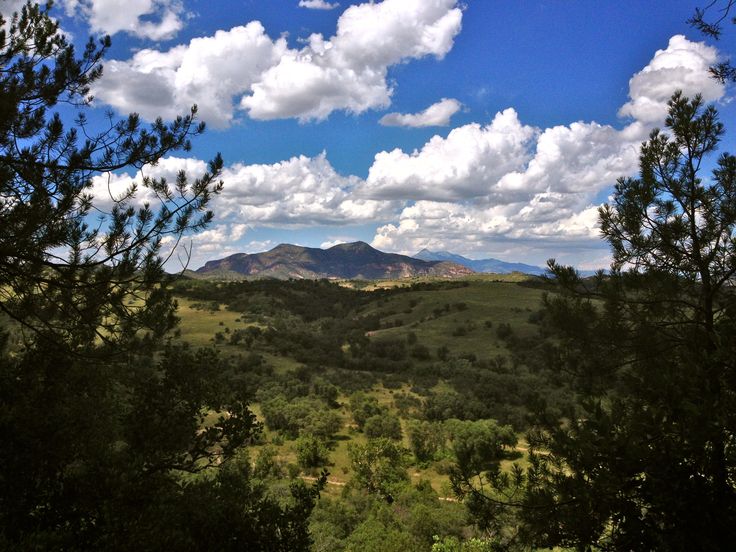
One site of Hermosa Mineral Drilling Proposal: Corral Canyon in the Patagonia Mountains.
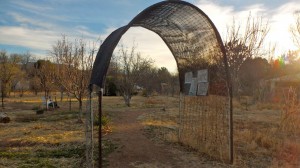
Mar 5, 2014 | Blog
By Colin Treiber
Conveniently located at Fourth and Duquesne, the Patagonia Community Garden offers a resource to all aspiring or experienced gardeners. It is a great opportunity to connect directly to our food, our neighbors, and the earth. By participating in local food growing, we become closer to the land, the community, and life. Through growing our food we take a vested interest in our own health and the health of this planet.
The Patagonia Community Garden offers a variety of plots. Find the space that resonates with you and make it your own. In addition to the standard beds, we will have some raised beds, developed this year to assist those that may find it difficult to plant at ground level.
 The community space is convenient and affordable. Not only are you supported by the knowledge of many other gardeners, but you also have access to necessary tools, water, seeds, and seedlings to make your plot a beautiful and abundant garden.
The community space is convenient and affordable. Not only are you supported by the knowledge of many other gardeners, but you also have access to necessary tools, water, seeds, and seedlings to make your plot a beautiful and abundant garden.
The importance of the community garden—and the space it offers—is manifold. The dryness that has developed over the last several years has intensified recently. Poor agricultural conditions spread across the farmlands of the west. It seems inevitable that our nation’s food production will dwindle, and consumers will feel the burden of increasing prices.
Fortunately, the systems supporting our nation’s food industry are changing. Small, regionally adapted, and sustainable farms are gaining traction. Community gardens and home gardens are sprouting into prominence, and for good reason. As the Community Gardening Association puts it:
“Community gardening improves people’s quality of life by providing a catalyst for neighborhood and community development, stimulating social interaction, encouraging self-reliance, beautifying neighborhoods, producing nutritious food, reducing family food budgets, conserving resources and creating opportunities for recreation, exercise, therapy and education.”
It could be said that the community garden is a doorway to new growth and intimacy in our life. It is an opportunity to develop respect and understanding for all life that surrounds us and an occasion to bring greater abundance into our lives. Let us do the work, together, to nurture this abundance.
The Patagonia Community Garden rents plots at the low price of $5 per month. The garden has a variety of seedlings available for gardeners. They will begin to be available for sale in the garden greenhouse by late March. We look forward to turning the garden into a true community of gardeners and growers eager to share experience, ideas, stories, and food. Please call Martha at 520-394-2752 with any questions. See you in the garden!
Colin Treiber is PARA’s social media magician. Be sure to say ‘hi’ on Facebook or Twitter!
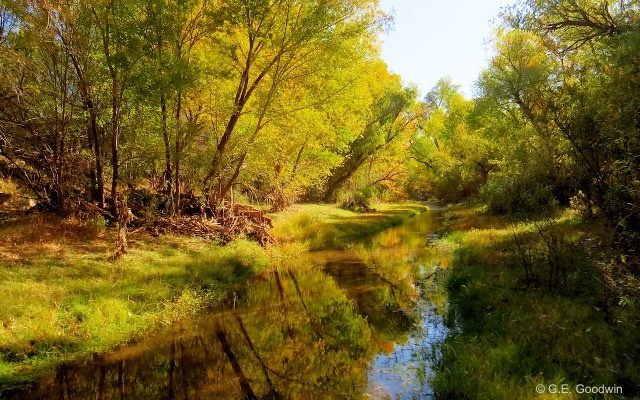
Mar 4, 2014 | Blog
By Michael Stabile
Our municipal watershed is the only source of potable water for the Town of Patagonia and over 300 private well users within a three-mile radius of town. The recent article in the PRT about the drop in the town’s water table and the subsequent discussion of possible water rationing is a wake up call to all residents of Patagonia.
Water is taken for granted; we all just assume that we will be able to turn the tap and water will flow. Thirteen years of drought and climatologists’ model of drier years to come should affect the way we use this precious resource. We should all do our part to conserve water.
At a recent meeting of the town council it was decided to have a further discussion with town residents on cutting back on their water usage voluntarily. Where else might the Town Council look for water protection? How about opposing industrial mining impacts on the community water supply?
The Rosemont project is projected to use 6,000 acre feet of water per year. That’s almost two BILLION gallons of groundwater. The Sonoran Institute’s water study calculated that the effects of this drawdown of the water table could possibly be felt as far away as Patagonia and could in turn, have a great effect on the Sonoita creek drainage.

Sonoita Creek, part of the Patagonia Municipal Water Supply
The AZ Mining Inc (Wildcat Silver) Hermosa project is located in the headwaters of the Harshaw creek drainage. When AZ Mining Inc / Wildcat Silver’s first Preliminary Economic Assessment was issued for investors, the project covered about 3,000 acres. The project has since grown to 13,666 acres, and the open pit has expanded by at least 30%, according to AZ Mining Inc / Wildcat Silver’s Pre-Feasibility Study released in December 2013. When Chris Jones, AZ Mining Inc / Wildcat Silver’s then CEO, gave a presentation to Patagonia residents in 2010, he said that the water usage would be 450,000-700,000 gallons of water per day. Estimating water usage from AZ Mining Inc / Wildcat Silver’s own formula and data (one-half ton water for each ton of ore processed), the Hermosa open pit mine would potentially consume almost two million gallons of water per DAY. By comparison, the town of Patagonia uses roughly 115,000 gallons of water per day. Even if everyone in town conserves water by 20%, it amounts to only 23,000 gallons per day. It will have very little impact if these mines go into operation.
These two mines would use close to three billion gallons of groundwater per year. The Town should take a stronger stance on the real threat to our water supply. We can conserve all the water we want, but it would be nothing in comparison to the amount of water consumed by proposed mining.
We live in a desert. We are in a drought with long-term scientific forecasts for increasing water shortages. Water is simply the most precious commodity we have. Water is far more precious than a few jobs promised to us.
Michael Stabile was the chairman of Patagonia’s Planning and Zoning commission, and at present is a Board member of PARA. He worked with Patagonia Town Manager David Teel to get the Sonoita Creek and Harshaw Creek drainages designated as the Town of Patagonia Municipal Supply Watershed.
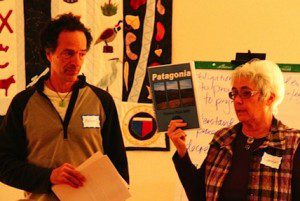
Dec 9, 2013 | Blog
It’s hard to believe that the end of the year is approaching! When 2013 began your friends, neighbors, and colleagues here at the Patagonia Area Resource Alliance (PARA) were gearing up for a busy year promoting the incredible beauty, community and natural heritage of your Town of Patagonia and the Patagonia Mountains. Little did we know what a whirlwind this year would be! The past eleven months have seemingly sped by while we have been advocating to protect this amazing place that we all treasure from the multiple threats that exploratory drilling and mining pose to our small community.
PARA was formed in 2011 to educate and engage the community about the risks and realities of mining, to promote local sustainable economies like ecotourism, to better understand our precious and imperiled natural resources such as clean water and wildlife, and to actively advocate for the protection of those resources in concert with Patagonia’s distinct and serene rural way of life.
You have helped us along the way this year! You have volunteered, come to public meetings, wrote letters to elected and appointed officials; you have taken a class to learn more about the wildlife in our midst and asked poignant questions about the future of our community. Together, we have contributed over 5000 volunteer hours already in 2013!
It has been an amazing and transforming year for PARA, but we have so much more to do! PARA runs on a shoestring budget with the human power of an almost entirely volunteer workforce and just one part-time, coordinator. We’d like to do so much more! Please consider making a donation to PARA this year to support and grow this critical work in our community.
We’d like to share with you just a few of the activities and milestones reached this year through the contributions of all of PARA’s supporters, volunteers and partners:

PARA Board members Michael & Carolyn
Educating the Community, Empowering Ourselves
With a grant awarded from Patagonia® Inc, PARA and Sky Island Alliance (SIA) co-hosted an Advocacy workshop for area residents with national expert Dinah Bear on the National Environmental Policy Act (NEPA). We put on two additional NEPA environmental impact scoping comment workshops on mining proposals and held four more letter writing sessions. The PARA Board also participated in our own workshops with SIA Executive Director, Melanie Emerson. Read more…
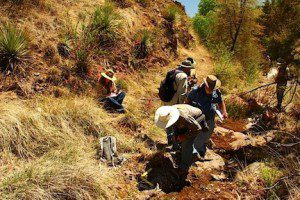
Dr. Van Devender & scientists in Harshaw Creek
Documenting Patagonia’s Natural History
We hosted a BioBlitz in the Patagonia Mountains with Dr. Tom Van Devender of SIA and scientists from all over the Southwest. 418 different species of plants and animals were documented in one weekend–including a new American record of the Willowleaf Oak (Quercus viminea). Results are being used to protect species and habitats imperiled by mining and drilling proposals and can be viewed online at www.madrean.org. Read more…
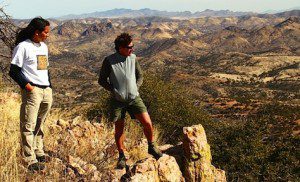
Sergio Avila and John Davis on American Peak
Advocating for Protection Through Tireless Outreach
PARA steadfastly engages elected officials and national organizations regarding the perils that Patagonia faces with proposed mining. This year we conducted tours of proposed mine sites to representatives from the U.S. Senate, Defenders of Wildlife, EARTHWORKS, TrekWest and the media. We remain dogged in our outreach to get and keep attention focused here. Read more…
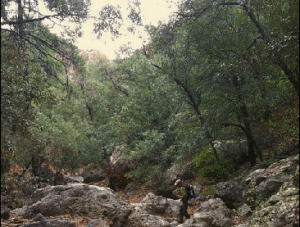
Board member Gooch hiking in Humboldt Canyon
Ensuring Agencies’ Due Diligence
We successfully made the case that the NEPA scoping period for Regal Resources mineral drilling proposal in Humboldt Canyon be re-opened. PARA advocated and reasoned with the District Ranger of the US Forest Service that NEPA decisions should be made using current rather than outdated information. He concurred and ultimately gave us all two additional years to prepare data for more comprehensive scoping comments that can accurately articulate the broadest range of potential impacts. Read more…
To learn more about our 2013 accomplishments and efforts, please take a look at PARA’s “Report to the Community” available on our website at: www.patagoniaalliance.org/our-activities-outreach/
Looking Ahead…
Unceasing Protection of the Patagonia Mountains.
With continued legal assistance from Defenders of Wildlife, PARA strives to hold mining companies, the US Forest Service and all agencies accountable to follow the laws and regulations designed to protect our water, air, surrounding ecosystems and communities. We are positioned to respond to future public scoping notices for exploratory mining proposals scheduled for the Patagonia Mountains.
Sustaining Wildlife Data Documentation and Collaborations
Citizen scientists from the Town of Patagonia continue wildlife monitoring efforts in the Patagonia Mountains focusing on areas immediately at risk by proposed mining activities. Data gathered is used to fight mining proposals through species lists, presence of vulnerable species and habitat analysis. Additional collaborations are ongoing with Defenders of Wildlife, EARTHWORKS, Sky Island Alliance and others to ensure this data is applied to advocacy efforts in the most effective ways.
Increasing Our Outreach for 2014
PARA is strategizing to expand community education activities to grow our base of support and empower concerned residents with potential actions to keep mining out of the Patagonia Mountains. We recognize the need to establish sustainable funding to maintain core functions and seek to expand funding sources. Receiving our own 501(c)(3) non-profit status was just the first step. With additional staff funding in the 2014 budget, we plan to add members to our team to continue to expand our outreach beyond our community boundaries. Our 2013 Financial Report is also available online: www.patagoniaalliance.org/our-activities-outreach/
For A Thriving Community in 2014 and beyond
PARA recognizes that the health and economic prosperity of our community are deeply connected to the wellbeing of the Patagonia Mountains and the Harshaw/Sonoita Creek watershed. They are the source of our drinking water, clean air and the centerpiece for the tourism that drives our local economy.
Please make a Year-End Gift to PARA
There are many needs in our community and many compelling requests for support. We believe one of the most fundamental is protecting our drinking water and our community from the well-known detrimental effects of open pit mining. To that end, PARA is seeking to raise $19,000 by the end of 2013 to support the several ongoing and new initiatives outlined above as we move into 2014. We are fortunate to have a group of amazingly committed community members and generous donors supporting our work, but we are looking to broaden the base of support to ensure not only financial sustainability, but also the ability to impact local, regional and national decision-making on our own behalf. That’s where you come in. The work necessary to make this vision of 2014 a reality is possible only because of your time and your financial support. Please make a gift today.
Please donate to PARA securely online at: www.patagoniaalliance.org/donations/
Every single contribution makes a sizable difference to our organization and ultimately for our community. It is only because of the generous support from people like you that we can undertake this critical work. Thank you!
Your PARA Board and Coordinator
Carolyn Shafer, Cliff Hirsch, Gooch Goodwin, Joseph Nitsche, Katie Flemming-Ballard, Lee Rogers, Michael Stabile and Wendy Russell
Aug 6, 2013 | Blog
By Wendy Russell
The Forest Service has re-opened the public comment period for the Regal Resources Sunnyside mining exploration project in Humboldt Canyon. This is the same project that had an earlier scoping period back in November 2011. According to the scoping notice from the Coronado National Forest, Sierra Vista District Ranger Mark Ruggiero has “decided to offer another scoping period in conjunction with this formal comment period to ensure that public involvement is current and comprehensive.”
Regal Resources Inc. is a junior mining company based in Canada. Its property in the Patagonia Mountains consists of 295 claims on the Coronado National Forest totaling approximately 5,900 acres. The scoping notice states that the Sunnyside mining exploration project is for 6 exploratory drilling sites to collect core samples to assess potential copper mineralization in Humboldt Canyon. The operation would run 24 hours a day, 7 days a week. Water would be hauled in and access for the project would be from the town of Patagonia by way of Harshaw Road, aka National Forest System Roads 49 and 58. Access within the project area would be via NFSR 812 and 4685.
According to the scoping notice, “if you submitted comments in 2011 regarding the Sunnyside project, you MUST advise us [Forest Service] in writing that you would like your previous comments to be considered as responsive to the legal notice for eligibility to appeal the decision: you do not have to resubmit your comments.” If you did not receive the scoping notice and would like to receive that information from the Forest Service contact Patrick Morton, FS Geologist, at (520)388-8348 or pmorton@fs.fed.us.
Link to Scoping Notice for Sunnyside mining project
Link to Sunnyside project map
Link to Sunnyside Plan of Operation
Link to USFS project page for Regal Resource’s Sunnyside project in Humboldt Canyon.
The Patagonia Area Resource Alliance co-hosted a comment writing workshop with Sky Island Alliance on Thursday, August 1 at 6:30 PM in Cady Hall to assist folks who want to comment on the Sunnyside project. It is our only opportunity to get the Forest Service to examine all aspects of this mining exploration project that may concern us as local citizens who live and enjoy recreation around the Patagonia Mountains. Remember, you’re only eligible to challenge the decision rendered by the Forest Service regarding this exploratory drilling project if you submit a comment within the 30-day comment period. The estimated deadline for comments is August 10, 2013.
We will be posting comment suggestions and a template from that workshop.
If you wish to submit a comment:
Please include the project name (Sunnyside Project) in the subject line of your response and/or email.
Comments may be submitted as follows:
Email: comments-southwestern-coronado@fs.fed.us
Facsimile: 520-388-8305, ATTN: Patrick Morton
U.S. Mail: Coronado National Forest, ATTN: Patrick Morton, 300 W. Congress St., Tucson, AZ 85701
Hand-delivery: 6th floor, 300 W. Congress St., Tucson, AZ 85701
Monday through Friday, 8 a.m. to 4:30 p.m., excluding Federal holidays
Also note: the Wildcat Silver Hermosa mining exploration project opened its public comment period in early August.










 Patagonia – The Hermosa silver mine proposed inside Patagonia, Arizona’s Municipal Supply Watershed could deplete the town’s drinking water and perpetually contaminate area groundwater with acid mine drainage, according to a new peer-reviewed report.
Patagonia – The Hermosa silver mine proposed inside Patagonia, Arizona’s Municipal Supply Watershed could deplete the town’s drinking water and perpetually contaminate area groundwater with acid mine drainage, according to a new peer-reviewed report.
 In the 50 years since the last mining bust, the community has rebuilt its local economy based on ranching, tourism, local food production and recreational amenities (birding, hunting, camping, cycling, hiking, etc).
In the 50 years since the last mining bust, the community has rebuilt its local economy based on ranching, tourism, local food production and recreational amenities (birding, hunting, camping, cycling, hiking, etc).
 Jenny Neeley reprised her role as our National Environmental Policy Act (NEPA) expert for tips on filing public comments on the Hermosa draft Environmental Assessment (EA) released by the Coronado National Forest. The purpose of an Environmental Assessment is to determine whether the impacts of a project will be significant. The goal for our comments on the draft EA is to demonstrate that the Hermosa project impacts will be significant so that the Forest Service conducts a more detailed and comprehensive Environmental Impact Statement.
Jenny Neeley reprised her role as our National Environmental Policy Act (NEPA) expert for tips on filing public comments on the Hermosa draft Environmental Assessment (EA) released by the Coronado National Forest. The purpose of an Environmental Assessment is to determine whether the impacts of a project will be significant. The goal for our comments on the draft EA is to demonstrate that the Hermosa project impacts will be significant so that the Forest Service conducts a more detailed and comprehensive Environmental Impact Statement. 




 The community space is convenient and affordable. Not only are you supported by the knowledge of many other gardeners, but you also have access to necessary tools, water, seeds, and seedlings to make your plot a beautiful and abundant garden.
The community space is convenient and affordable. Not only are you supported by the knowledge of many other gardeners, but you also have access to necessary tools, water, seeds, and seedlings to make your plot a beautiful and abundant garden.






